
Seminars
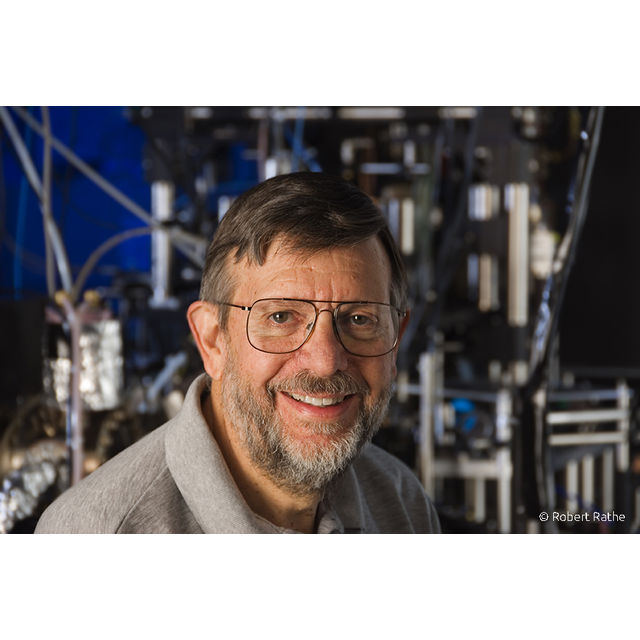
Second C2N Colloquium: "A New Measure: the reform of the International System of Units"
Centre de Nanosciences et de Nanotechnologies, Amphithéâtre, PalaiseauSeminars
Abstract: The metric system began with the French revolution, and now we are experiencing the greatest revolution in measurement since the French revolution. The definitions of the kilogram, ampere, kelvin, and mole are all changed, being based on chosen and fixed values for Planck’s constant, the electron charge, Boltzmann’s constant, and Avogadro’s number. I will explain how this is possible, why it was necessary, and speculate about future changes in the SI.
Bio: William D. Phillips received his Ph.D. from MIT in 1976. In 1978, after a postdoc, he joined the U.S. National Institute of Standards and Technology (NIST) in Gaithersburg were he began NIST’s Laser Cooling and Trapping Group. That group, now part of the Joint Quantum Institute, developed many of the techniques now used world-wide for laser cooling and cold atom experiments. In 1997, Dr. Phillips shared the Nobel Prize in Physics "for development of methods to cool and trap atoms with laser light."
Colloquium co-organized with Institut d’Optique Graduate School
External visitors should register via e-mail at com@c2n.upsaclay.fr
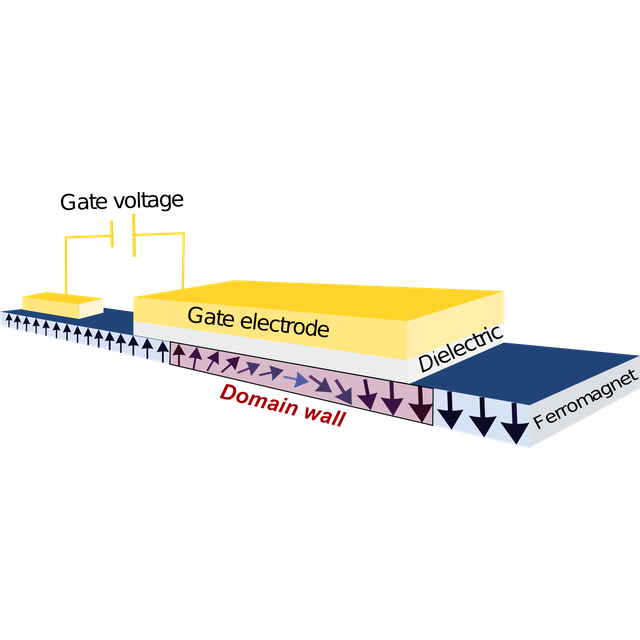
Electric field control of magnetism
Centre de Nanosciences et de Nanotechnologies, Amphithéâtre,Seminars
Using electric fields to control the magnetic response of ferromagnetic metallic nanostructures is being intensily investigated not only to
unravel the rich physical mechanisms at play but also for its potential for reducing power consumption in spintronic applications.
In this seminar I will give an overview of the different physical mechanisms that can be involved in E-field control of magnetism, such as charge accumulation or ionic displacement, in a variety of materials and device geometries. I will focus on the effects of electric fields on magnetic anisotropy, magnetic domain wall dynamics and, most recently achieved, on the Dzyaloshinskii-Moriya interaction. I will also comment on the relevance of this concept for the developement of practical applications in spintronics.
Lisa herrera Diez has an interdisciplinary background in physics and chemistry. She studied physical chemistry at the National University of Cordoba (Argentina) and conducted her doctoral studies at the Max-Planck Institute for Solid State Research while enrolled in the physics doctoral school at Ecole Polytechnique Federale de Lausanne (2008-2010). During this time she performed studies on magnetic domain wall dynamics and magneto-transport in devices based on diluted ferromagnetic semiconductors. From 2011 to 2012 she worked as a postdoctoral researcher at Institut Neel in Grenoble. During this postdoctoral stay she worked on electric field control of magnetic anisotropy and domain wall dynamics in metallic ferromagnetic devices. Since 2013 she is a CNRS researcher at C2N and her main scientific interests are oriented towards the control of domain wall dynamics in multifunctional nanodevices
External visitors should be register
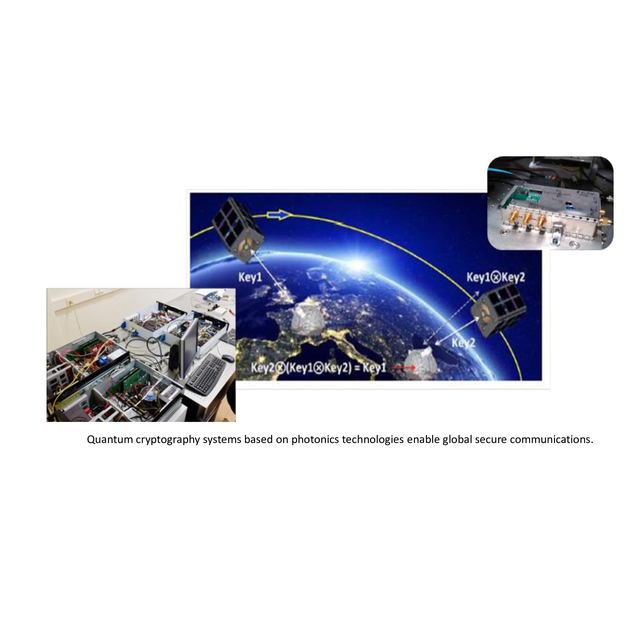
Secure communications in quantum networks
Centre de Nanosciences et de Nanotechnologies, Amphithéâtre, PalaiseauSeminars
Quantum technologies have the potential to improve in an unprecedented way the security and efficiency of communications in network infrastructures. In this talk, we discuss the current landscape in quantum communication and cryptography, and focus in particular on recent photonic implementations, using encoding in discrete or continuous properties of light, of central quantum network protocols, enabling secret key distribution, verification of multiparty entanglement and transactions of quantum money, with security guarantees impossible to achieve with only classical resources. We also describe current challenges in this field and our efforts towards the miniaturization of the developed photonic systems, their integration into telecommunication network infrastructures, including with satellite links, as well as the practical demonstration of novel protocols featuring a quantum advantage for a wide range of tasks. These advances enrich the resources and applications of the emerging quantum networks that will play a central role in the context of future quantum-safe communications.
Eleni Diamanti is a CNRS researcher director at the LIP6 laboratory of Sorbonne University in Paris. She received her Diploma in Electrical and Computer Engineering from the National Technical University of Athens in 2000 and her PhD in Electrical Engineering from Stanford University in 2006. She then worked as a Marie Curie post-doc at the Institute of Optics Graduate School in Palaiseau before joining the CNRS in 2009. Her research focuses on experimental quantum cryptography and communication complexity, and on the development of photonic resources for quantum networks. She is a recipient of a European Research Council Starting Grant, vice director of the Paris Centre for Quantum Computing, steering committee member of the French regional and national networks on Quantum Technologies, and elected member of the Board of Stakeholders of the European Public Private Partnership in Photonics.
External visitors should be register
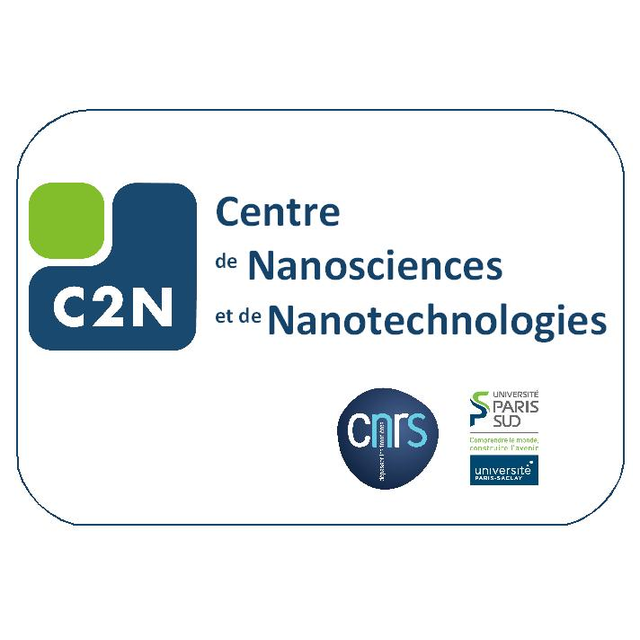
Engineering materials for All Optical magnetic recording
, Salles A005-A007, PalaiseauSeminars
The possibilities of manipulating magnetization without any applied magnetic field have attracted the growing attention of researchers during the last fifteen years. From the discovery of spin transfer torque switching [1], the effect of electric fields on magnetic devices [2] to magnetization switching using femto or pico second pulsed lasers [3,4,5] the manipulation of magnetization at ultra-short time scales has become a fundamentally challenging topic with implications for magnetic data storage. Here we demonstrate optical manipulation of the magnetization of carefully engineered magnetic materials and devices. We prove that polarized light induced magnetization reversal can be observed not only in very particular rare-earth transition-metal alloys [3,4] but also in a variety of materials (alloys, multilayers and complex structures) [5]. In particular we show optical magnetization reversal for ferromagnetic thin film and granular media. This is a breakthrough for application since it provides materials “compatible” with spintronic applications for data storage, memories and logic. Furthermore we show that it is possible to create femto-second electron pulse which also induce magnetisation reversal [6,7]. In addition this study offers valuables information to understand the underlying fundamental mechanisms involved.
[1] J. Katine et al Phys. Rev. Lett. 84 3149 (2000)
[2] H. Ohno, et al, Nature 408, 944 (2000)
[3] C. D. Stanciu, et al Phys. Rev. Lett. 99, 047601 (2007).
[4] S. Mangin, et al, Nature Materials 13, 286-292 (2014)
[5] C-H. Lambert et al, Science 345 (6202), 1337 (2014)
[6] Y. Xu, et al Adv Matter 29 42 1703474 (2017)
[7] S. Iihama et al Adv Matter 1804004 (2018)
Stephane MANGIN
2008 Full Professor, Université de Lorraine – Nancy (France)
2010 - Head of the Nanomagnetism and Spintronic team of the Université de Lorraine 45 members
2012- Scientific Director of a large user scientific facility, unique in the world: TUB. Davm (70 meters under ultra-high vacuum to connect 30 equipment clusters to grow and characterize material at the nanoscale:
2015- Co-Director of the Associated International Laboratory (LIA) on Nanoelectronics (CNRS – University of California San Diego)
2016- Project Leader of “Nanomaterials for smart sensors”: one of the 6 projects supported by the Université de Lorraine of Excellence.
External visitors should be register
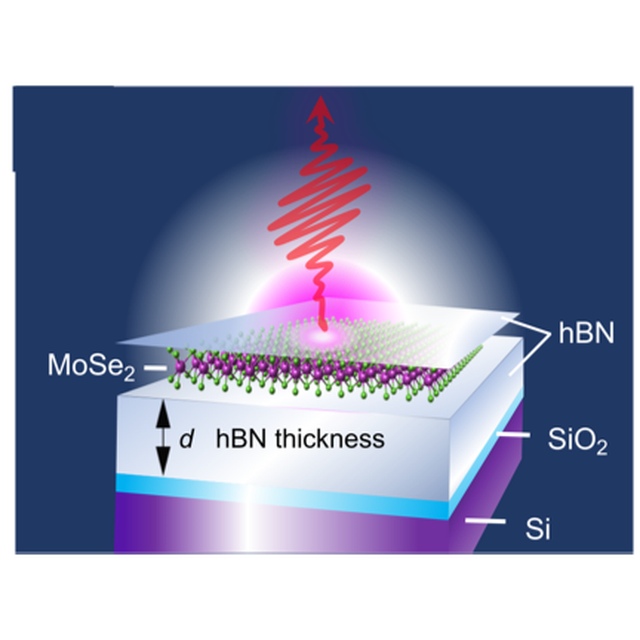
Optical Properties of 2D Semiconductors in van der Waals Heterostructures
Centre de Nanosciences et de Nanotechnologies, Amphithéâtre, PalaiseauSeminars
The spectacular progress in controlling the electronic properties of graphene has triggered research in alternative atomically thin two-dimensional crystals. Monolayers (ML) of transition-metal dichalcogenides (TMD) such as MoS2 have emerged as very promising nanostructures for optical and electronic applications.
In this talk I will review the exciton and optical properties of TMD monolayers [1]. I will show that encapsulation of MoS2 ML in hexagonal boron nitride (hBN) can efficiently reduce the inhomogeneous contribution to the exciton linewidth, as we measure in photoluminescence and reflectivity a FWHM down to 1 meV [2]. Similar results are obtained with encapsulated MoSe2, MoTe2, WSe2 and WS2 MLs [3].
Among the new possibilities offered by the well-defined optical transitions we evidence the optical selection rules for in-plane propagation of light. These studies yield a direct determination of the bright-dark exciton splitting [4]. We also uncover new information on exciton-exciton interactions [5] and exciton-photon weak coupling regime in these Van der Waals heterostructures. The exciton spontaneous emission time can be tuned by one order of magnitude depending on the thickness of the surrounding hBN layers as a result of the Purcell effect [6].
[1] Wang et al, Rev. Mod. Phys. 90, 21001 (2018)
[2] Cadiz et al, PRX 7, 21026 (2017)
[3] Manca et al, Nature Com. 8, 14927 (2017)
[4] Wang et al, PRL 119, 47401 (2017)
[5] Han et al, PRX 8, 31073 (2018)
[6] Fang et al, PRL 123, 067401 (2019)
Xavier Marie is Professor at the National Institute of Applied Sciences (INSA Toulouse). He has joined the Institut Universitaire de France in 2005 as a Junior member and in 2015 as a Senior member. He is currently the director of the Labex NEXT (Nano, EXtreme measurements and Theory).
He has worked for about 30 years on electronic and optical properties of
low dimensional semiconductor structures (quantum wells, quantum dots, 2D materials). His main present interest is the optical, valley and spin coherence in semiconductor nanostructures and band structure engineering of semiconductors for optical telecommunication devices and solar cells.
External visitors should be register
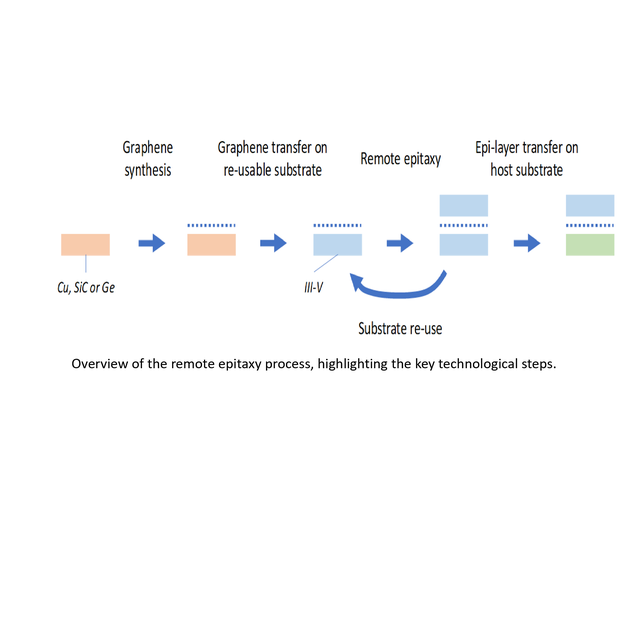
Remote epitaxy at C2N: transferable III-V devices for simplified integration and cost reduction
Centre de Nanosciences et de Nanotechnologies, Amphithéâtre, PalaiseauSeminars
I will present in this seminar my project for the development of the remote epitaxy, which consists in the epitaxy on a crystalline substrate covered by a monolayer of graphene. It was shown to allow the growth of transferable epilayers, for devices combining III-V with other materials, or substrate recycling for cost reduction. Before exploring the challenges and opportunities of the remote epitaxy, I will introduce two projects I previously conducted: the first one dealing with materials characterisation, the second one consisting in an original device architecture. Those methods find application in various semiconductor devices, with examples given on photovoltaics for this presentation.
A hyperspectral imager will be firstly introduced, which records luminescence signals with spatial and spectral resolution, and an absolute intensity calibration. It will be shown how this setup allows measuring quasi-IV curves without contacts, and characterising inhomogeneous optoelectronic properties down to the micrometer scale. A method for mesa sidewall passivation, inspired by the working principle of MOSFETs, will then be detailed, in which the lateral spreading layer conductivity is modulated. Such a passivation method is strongly needed for micro-sized solar cells, used under sunlight concentration or for distributed power generation.
Amaury Delamarre completed his PhD at the Institut de Dévelopement de l’Energie Photovoltaïque (IRDEP, now IPVF) on the development of new characterisation methods of solar cells by luminescence. I then moved to the Sugiyama and Nakano laboratory at the University of Tokyo, and took part in the LIA NextPV, where I worked on the development of high efficiency III-V solar cells fabricated by MOVPE. I recently moved to the C2N where I will develop the remote epitaxy for III-V device fabrication.
External visitors should be register
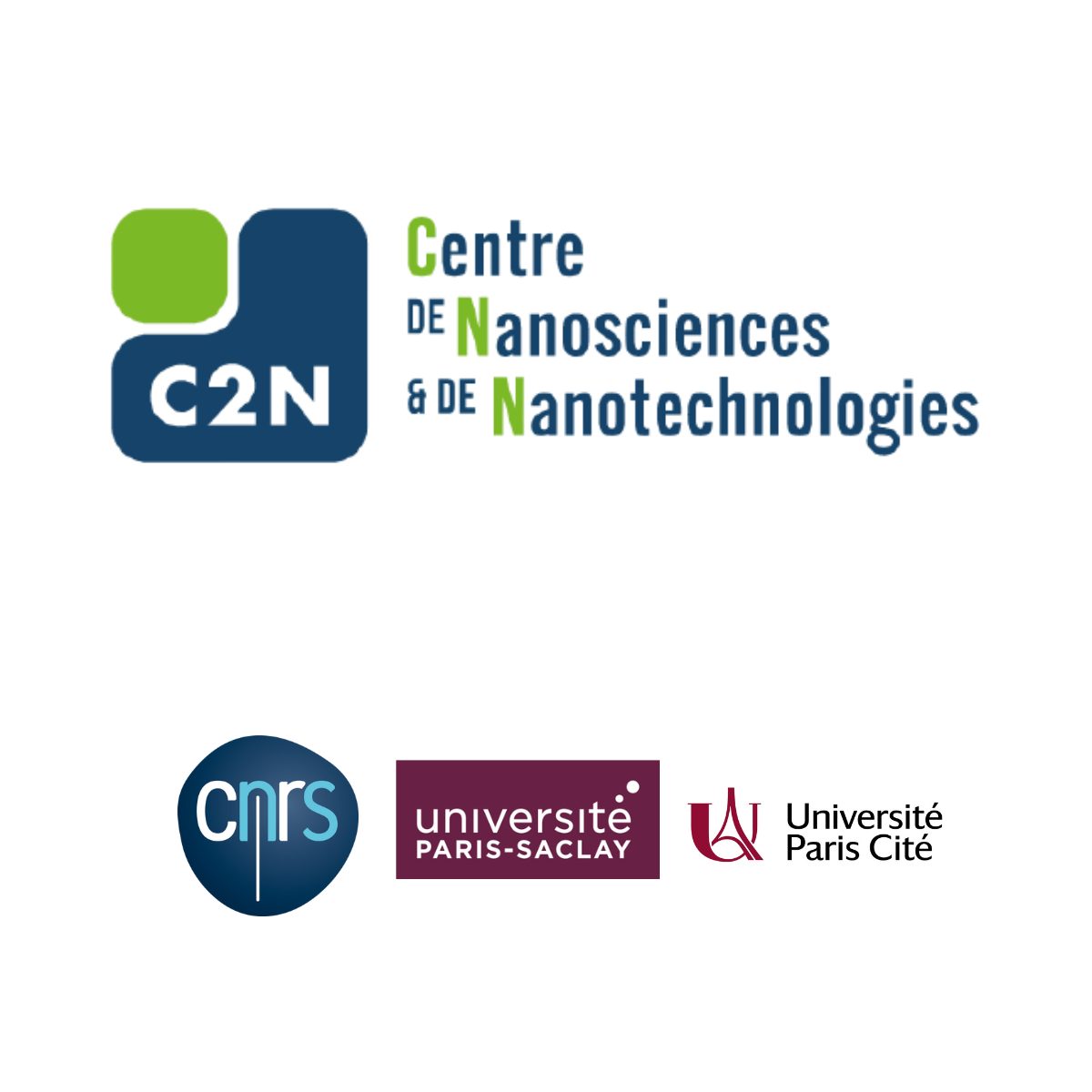
Solid-state nanophotonics with quantum dots
Centre de Nanosciences et de Nanotechnologies, Amphithéâtre, PalaiseauSeminars
Quantum dots have attracted much attention in recent years, particularly owing to their excellent properties as sources of non-classical light for optical quantum technologies. A key example is an “on-demand” single photon source: a single classical trigger causes the emission of a single photon with close to unity probability, a valuable resource for optical quantum communication and computing. Whilst quantum dots have achieved the best performance recorded to date for this kind of source [1], imperfections remain. In particular, working in the solid-state inevitably introduces couplings to the host lattice through phonons that cause a simple “two
level atom” picture to break down.
In this seminar I will present our implementation of such a single photon source based on a quantum dot in a photonic crystal nanocavity [2] and demonstrate how ultrafast techniques can reveal critical dynamics on picosecond timescales. These ultrafast techniques reveal a radiative recombination rate that is enhanced by a Purcell factor of 42, enabling potential source repetition rates as high as 10 GHz. To understand the critical role of the solid-state environment in determining both the excitation [3] and emission [4] dynamics on picosecond timescales, I will outline a comprehensive picture of interactions between quantum dots and acoustic phonons that is based on joint theoretical and experimental investigations. Understanding these processes, particularly in the presence of an optical cavity, is key to maximising the performance of solid-state optical quantum devices and also presents the opportunity to realise new functionalities.
References:
[1] N. Somaschi et al., ‘Near-optimal single-photon sources in the solid state’, Nat. Photonics, vol. 10, no. 5, pp. 340–345, May 2016.
[2] F. Liu, A. J. Brash et al., ‘High Purcell factor generation of indistinguishable on-chip single photons’, Nat. Nanotechnol., vol. 13, no. 9, pp. 835–840, Sep. 2018.
[3] J. H. Quilter, A. J. Brash et al., ‘Phonon-Assisted Population Inversion of a Single InGaAs / GaAs Quantum Dot by Pulsed Laser Excitation’, Phys. Rev. Lett., vol. 114, no. 13, Mar. 2015.
[4] A. J. Brash et al., ‘Light Scattering from Solid-State Quantum Emitters: Beyond the Atomic Picture’, Phys. Rev. Lett. in press, ArXiv:1904.05284 Cond-Mat Physics quant- Ph, Apr. 2019.
Alistair Brash:
I studied for my undergraduate degree at Imperial College London, completing my master’s project on plasmonic-enhanced non-linear optics under Prof. Jon Marangos. After graduating in 2012, I moved to Sheffield to study for a PhD in ultrafast dynamics of single quantum dots, supervised by Prof. Mark Fox. Upon completing my PhD in 2016, I took a Postdoctoral position at Sheffield, focusing on quantum photonics with quantum dots coupled to optical nanostructures.

Light interaction with nanoresonators
Centre de Nanosciences et de Nanotechnologies, Amphithéâtre, PalaiseauSeminars
Resonators, be it plasmonic, photonic, micro or pico, are triggering the development of various applications in nanooptics, from quantum information processing, plasmon-assisted lasing, to nanosensing of biomolecules.
The properties of cavities, of any kind, are due to their intrinsic natural resonance modes. Because of dissipation, either by absorption or leakage in the open space, the modes have a finite lifetime. They are eigenstates of a non-Hermitian operator, here the Maxwell’s equations.
Two characteristic parameters, which figure prominently in the physics and device applications of cavities, quantify the capability of cavity modes to boost light-matter interactions, the quality factor Q and the mode volume V.
It is therefore important to be familiar with the modes, their Qs, their Vs, their excitation rate by plane waves or near-field sources, their perturbation by tiny objects ... Usually, all these concepts are well comprehended in the limit of Hermitian physics. We will revisit them substantially in the framework of non-Hermitian physics, trying to answer questions such as: how we partition the LDOS between Q and V? Is the definition of Q so evident? Why V should be complex valued? What is the signification of Im(V)?
Philippe Lalanne (CNRS) is an international expert in computational & nanoscale electrodynamics. With his colleagues, he has elaborated powerful modal theories for gratings, photonic-crystal waveguides and nanoresonators. This helped him providing deep insight into key nanoscale optical phenomena and devices, e.g. confinement in photonic-crystal cavities and extraordinary optical transmission, and demonstrating novel nanostructures with record performance in their time, e.g. broadband photon sources, slow-light injectors. Noteworthy, he has pioneered the development of metalenses by arraying nanopillars that impart a local phase shift as a function of their dimension. This allowed the demonstration of the first flat optical elements with high efficiency and large-NA.
External visitors should be register

First C2N Colloquium: "From Einstein’s questions to quantum information: a new quantum revolution"
Centre de Nanosciences et de Nanotechnologies, Amphithéâtre, PalaiseauSeminars
Abstract: In 1935, with co-authors Podolsky and Rosen, Einstein discovered a weird quantum situation, in which particles in a pair are so strongly correlated that Schrödinger called them “entangled”. By analyzing that situation, Einstein concluded that the quantum formalism is incomplete. Niels Bohr immediately opposed that conclusion, and the debate lasted until the death of these two giants of physics. In 1964, John Bell discovered that it is possible to settle the debate experimentally, by testing the now celebrated «Bell’s inequalities», and to show directly that the revolutionary concept of entanglement is indeed a reality. A long series of experiments, started in 1972, yielded more and more precise results, in situations closer and closer to the ideal theoretical scheme. After explaining the debate, and describing some experiments, I will also show how this conceptual discussion has prompted the emergence of the new field of quantum information and quantum technologies.
Bio: Alain Aspect is a physicist, distinguished scientist and professor at Ecole Polytechnique and Institut d’Optique graduate School. Alain was the first to experimentally confirm the non-local character of quantum entanglement, a bizarre area of quantum mechanics that perplexed Einstein and many others. This understanding has led to applications of quantum mechanics beyond the lab scale, towards quantum computing and provably secure communications. Alain and his collaborators have also made breakthroughs in laser cooling of atoms, Bose-Einstein condensates, and cold atom simulation of the celebrated Anderson localization.
The seminar will be followed by a discussion between Alain Aspect and the students, and a lunch cocktail will be served in the C2N main hall.
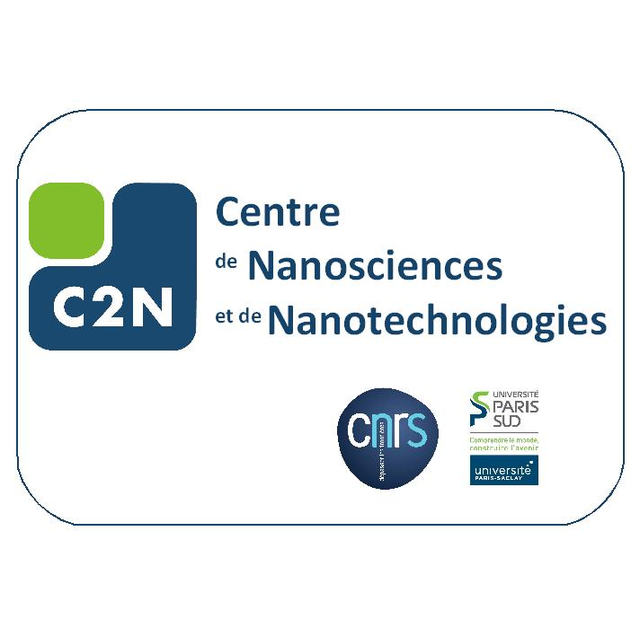
Programming multiphoton entanglement: theory and practice
Centre de Nanosciences et de Nanotechnologies, A003, PalaiseauSeminars
Quantum computers promise a paradigm shift humanity’s information processing capability. Graph states are the predominant language of entanglement between qubits. Modern quantum error correction—a crucial component of large-scale quantum computation—relies centrally on graph state entanglement. Different graphs enable different computational tasks, and so the generation of arbitrary graph states is powerful.
Meanwhile, silicon quantum photonics is a high-performance, scalable quantum technology platform, boasting circuits of unparalleled size. However, integrated quantum photonics has so far been constrained to two on-chip generated photons. Here, we present the first device to wield four-photon entanglement, and measure high-visibility on-chip quantum interference. We also develop rules for the successful postselection of graph states, and probe which states are inaccessible. Further, we identify optimal photonic circuits capable of generating all accessible graph states up to 8 qubits. This provides an endgame strategy for the final era of postselected experiments, before heralded devices become a necessity.
On our silicon chip, four sources of spontaneous four-wave mixing generate two Bell pairs in four dual-rail qubits. These are entangled using a two-qubit gate, programmably generating either star- or line-type graph states. Reconfigurable single-qubit gates then access the remaining four-qubit graph states and implement projective measurements. Finally, the photons are routed off-chip to superconducting nanowire single photon detectors. Our star and line graph states have fidelities 0.78 ± 0.01 and 0.68 ± 0.02 respectively. Our results represent an important step on the road to truly scalable quantum photonics.
Jeremy Adcock:
Jeremy's Ph.D thesis was focused on scaling up entanglement in integrated quantum photonics, via the generation of graph states---quantum states with ubiquitous application in quantum information protocols. In his thesis, he establishes rules for the successful postselection of linear optical experiments, and in doing so uncovers new, fundamental limitation of postselected gates and sources. Further, he demonstrated the first integrated device to generate four-photon entanglement in dual-rail qubits, overcoming the two-photon barrier. The silicon chip generated both types of four-qubit graph state on the same device (a first in optics) and demonstrated high visibility on-chip quantum interference. Jeremy is now a postdoc in QETLabs University of Bristol, working on integrated photonics for quantum information, graph state entanglement, and architectures for linear-optical quantum computing.